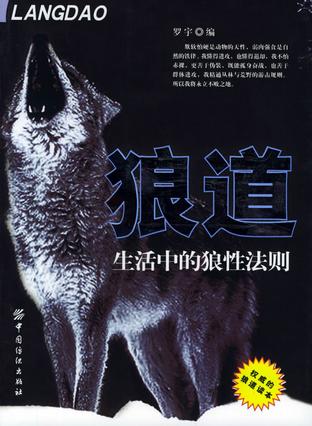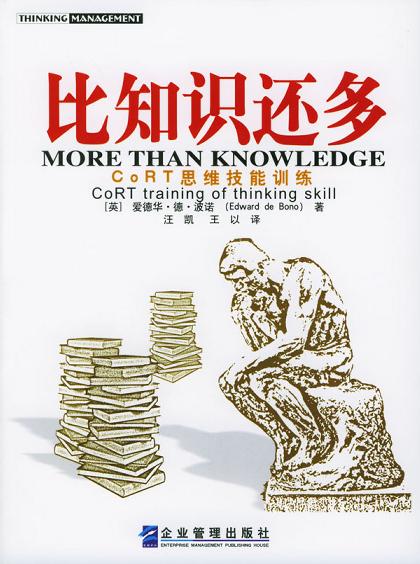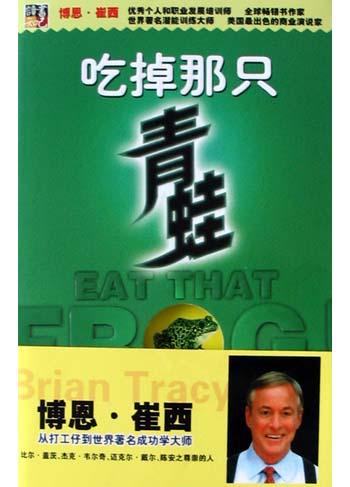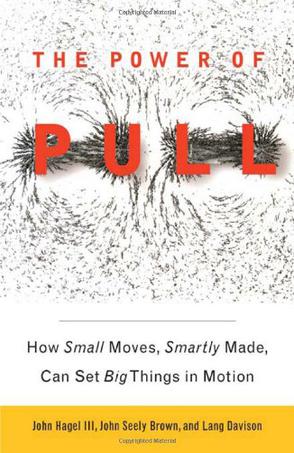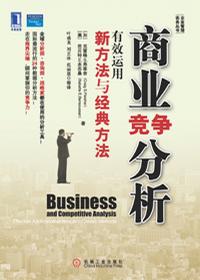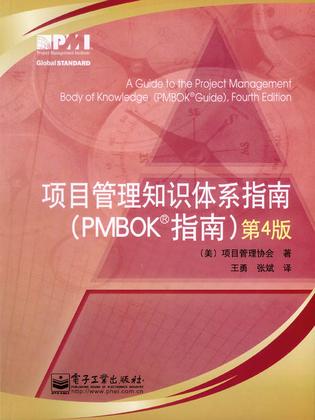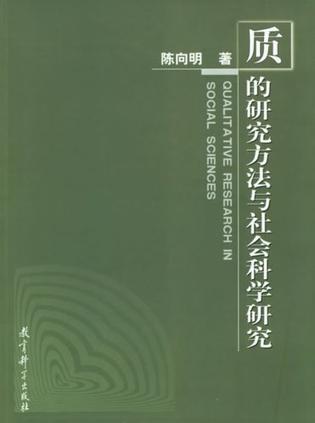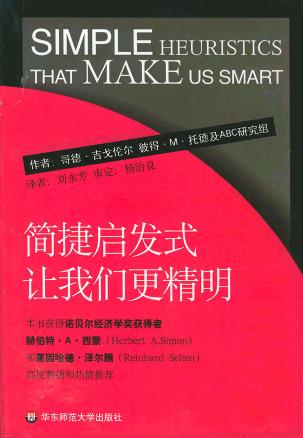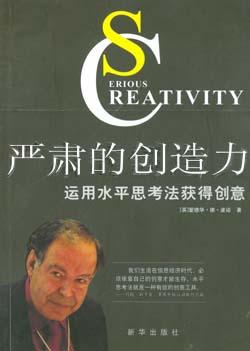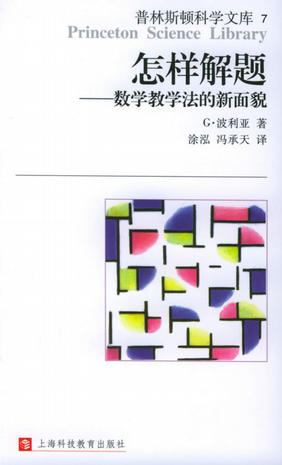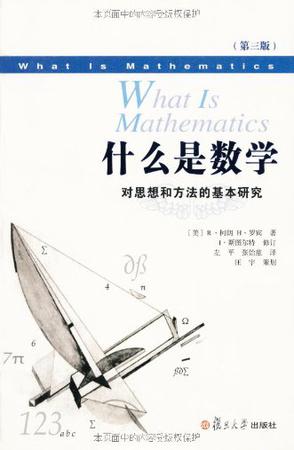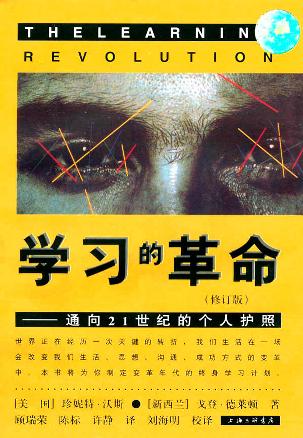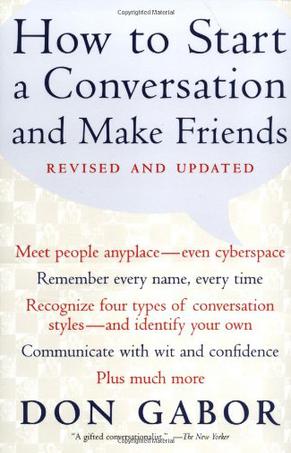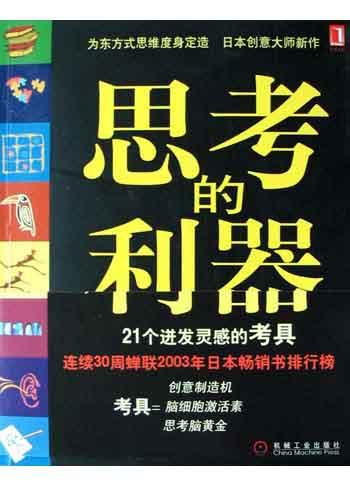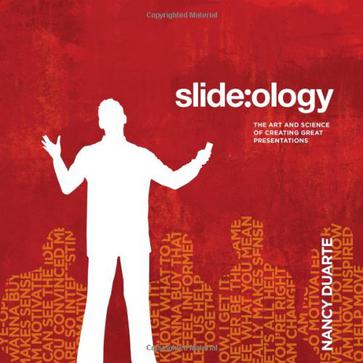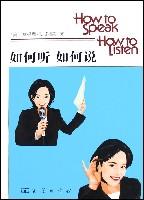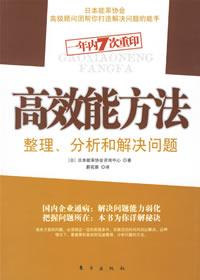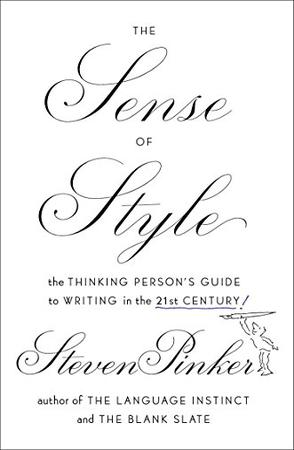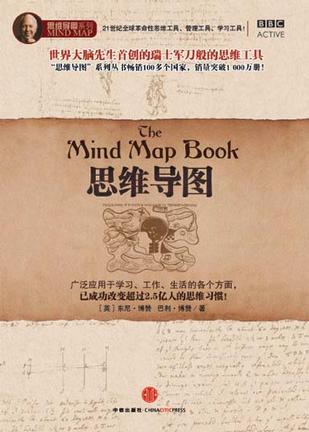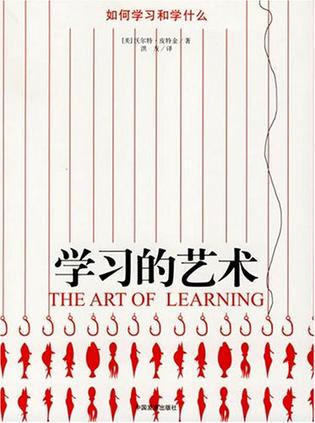欢迎来到相识电子书!
标签:方法
-
狼道
《狼道:生活中的狼性法则》一书运用企业操作实例、生活中的小品和古今中外的一些故事,对“狼道”做出了形象而又深刻的描述。作者以“狼道”的强悍和智慧给企业管理、个人生活注入新的激素。这本书每一个企业的每一位员工应该拥有的,是每一位企业管理者应该研读的。它汇聚了三千年来以弱胜强的制胜之道,历代官宦秘而不宣的斗争艺术。因此,它也是每一位想以弱小的起点进入强者之林应该阅读的必备书籍。 作者以“狼道”强悍的智慧,给企业管理、个人生活注入新的激素。书中汇聚了很多以弱胜强的制胜之道。 -
比知识还多
《比知识还多:CoRT思维技能训练》以讲求实效的方式来论述思维技能的训练。它不是在进行哲学思辩,而是以世界上规模最大的思维技能训练计划为基础,通过循序渐进的训练过程使人们的思维能力得以提升。全书分为两部分。第一部分是关于思维训练中的一般原则。力图阐明把思维当作一种能通过自我关注而得以改进的技能来教授的必要性。这一部分的论述与见解是建立在对思维现象和思维教学的长期观察和实践的基础之上的。 第二部分介绍了完整的CoRT思维训练课程的60个工具,详细解释了从思维的广度、组织、交互、创造力、信息和情感、行动等六个方面的思维技能。CoRT课程为我们搭建了一个整体的思维框架,并提供了很多练习的机会,直到我们能够把它作为一种熟练使用的工具,并运用与各种情形当中。 CoRT思维训练课程的理念是:简单、实用、清晰、集中和严肃。经验证明,接受过CoRT思维训练之后,人们的个人能力能够迅速得到提高,并有效地改善了分析问题、解决问题的能力。目前,这一课程已在全球几十个国家得以广泛的应用,并直接作为千千万万的人们在学习、工作以及日常生活当中的行路指南。 -
吃掉那只青蛙
吃掉那只青蛙:提高效率和改善工作的简便方法,ISBN:9787801426024,作者:(美)博恩·崔西(Brain Tracy)著;许海燕译 -
The Power of Pull
In a radical break with the past, information now flows like water, and we must learn how to tap into its stream. Individuals and companies can no longer rely on the stocks of knowledge that they've carefully built up and stored away. But many of us remain stuck in old practices, practices that could undermine us as we search for success and meaning. In this revolutionary book, three doyens of the Internet age, whose path-breaking work has made headlines around the world, reveal the adjustments we must make if we are to take these changes seriously. In a world of increasing risk and opportunity, we must understand the importance of pull. Understood and used properly, the power of pull can draw out the best in people and institutions by connecting them in ways that increase understanding and effectiveness. Pull can turn uncertainty into opportunity and enable small moves to achieve outsized impact. Drawing on pioneering research, The Power of Pull tells us how to apply its principles to unlock the hidden potential of individuals and organizations, and how to use it as a force for social change and the development of creative talent. The authors explore how to use the power of pull to: * Access new sources of information * Attract likeminded individuals from around the world * Shape serendipity to increase the likelihood of positive chance encounters * Form creation spaces to drive you and your colleagues to new heights * Transform your organization to adapt to the flow of knowledge The Power of Pull is essential listening for entrepreneurs, managers, and anybody interested in understanding and harnessing the shifting forces of our networked world. -
商业竞争分析
《商业竞争分析:有效运用新方法与经典方法》详细展现了24种当今最有价值的经营管理和竞争力分析的工具方法,既有经典方法如麦肯锡7S分析。也有最新的分析手段,有些在我国还是第一次系统提及。每一个方法都会详细介绍其优劣势、使用步骤和案例分析等几个方面。这些工具和技巧囊括了战略管理的各个层面:战略分析、竞争和客户分析、环境分析、评估分析和财务分析等。《商业竞争分析:有效运用新方法与经典方法》独有的FAROUT评价分析,还让读者在了解分析技巧的同时,根据其自身的商业环境和战略意图选择适合的战略分析工具和技巧。 -
项目管理知识体系指南
本书是美国项目管理协会(PMI)的权威经典著作,已经成为美国项目管理的国家标准之一,也是当今项目管理知识与实践领域的事实上的世界标准。本书中文简体字版由PMI独家授权在中国出版发行,其内容与第3版相比有一定更新,共分为5大部分12章内容,以精辟的语言更新了项目管理5大过程组的定义及项目管理9大知识领域的介绍。 本书由资深项目管理专家翻译,并由PMI组织的专家委员会最后审定。 -
质的研究方法与社会科学研究
《质的研究方法与社会科学研究》是国内第一部系统评介“质的研究方法”(qualitative research)的专著,对目前国际社会科学界提出的有关理论问题以及新近发展出来的操作手段进行了深入的探讨,并结合有关西方学者以及作者自己的研究实例对其进行了生动的展示和说明。“质的研究方法”目前在社会科学研究领域是与“量的研究方法”相提并论、交相辉映的一种研究方法,它要求研究者深入社会现象,通过亲身体验了解研究对象的存在方式和意义解释,在原始资料的基础之上建立相关理论。 -
简捷启发式
在《简捷启发式让我们更精明》中,作者开宗明义地指出,人类和动物的理性是有限的(既不是非理性的,又不是纯理性的),但这种有限理性已足以使他们在现实环境中作出合理判断和决策。现实环境并不苛求人类和动物,也就是说并不要求人类和动物时时处处都作出最优化选择和决策,所以任何人都不必为自己理性资源的有限而忐忑不安。相反,那种奢望通过无限理性实现最优化目标的理想主义者反而是不合时宜的!这并不是说《简捷启发式让我们更精明》作者希望无限制地降低人类理性的目标,将人类还原到低等动物的理性水平。他们对理性的最低要求是:能够与现实环境(包括自然和社会环境)的要求相匹配!当它能够做到这一点时,从生态学角度看就已经足够了。这种理性被称为“生态理性”。一个重要的假设是:有机体是否有理性或其作出的判断和决策是否合理,应该用现实的外在标准来判断,而不是用唯智论者所推崇的不切实际的理想标准来判断。不存在与现实环境相脱离的不着边际的抽象理性,如果有,它对有机体适应现实环境也是毫无价值的。只有当与环境的现实要求结合起来考察人类和动物理性时,才能找到评判理性的合理标准,这个标准就是“生态合理性”。 提出一种观点是容易的,展开和证明一种观点却是困难的。难能可贵的是,适应行为与认知研究组从上述关于人类理性的基本观点出发,形成了连贯严密的研究方案,并从诸多学科领域为其观点累积了丰富证据。既然只有当理性被付诸实际使用时,才具有适应价值,才能提供评判它的机会,于是《简捷启发式让我们更精明》作者首先从两个方面对有机体需要使用理性资源加以解决的现实问题作了分类:首先,他们按照有机体通常面对的认知问题将有关任务分为选择、记忆、数量估计、归类等类别;其次,他们按照现实生活中有机体面对的现实适应性问题将有关任务分为食物选择、配偶选择、父母投资以及从动作推断意图等类别。如果说人类和动物的理性是有限的,那么当面临上述诸多现实任务时,他们就应该且必须采用简捷而“精明”的方法来配置和使用其资源;如果说人类和动物的理性具有生态合理性的话,那么也只有在他们“精明地”配置和使用其有限理性资源时,才能够做到这一点。所以,“有限理性”和“生态理性”这两个术语成了适应行为与认知研究组的中心概念,它们双双携手使得有机体在现实环境中采用“快速节俭的”简捷启发式成为必要。有机体是否采用简捷启发式呢?他们可能采用哪些简捷启发式呢?他们何时采用简捷启发式呢?简捷启发式在现实环境中的成效如何呢?弄清楚了这些问题,关于有限理性和生态理性的命题也就得到了检验。正由于如此,对这些问题的回答构成了《简捷启发式让我们更精明》的主要内容。 -
严肃的创造力
区别于垂直思维,水平思维不是过多地考虑事物的确定性,而是考虑它的多种选择的可能性;关心的不是在旧观点上修修补补,而是如何提出新观点;不是一味地追求正确性,而是追求丰富性。它已成为一种“激发组织成员智力潜能的思维管理工具”,在一些大型企业如微软、摩托罗拉、松下、麦当劳、IBM、杜邦等得到成功应用。西门子公司甚至让其37万名职员学习德·波诺的思维课程。本书是德·波诺博士对25年来创新思维研究成果与实践经验的总结,结合理论、技巧和案例,阐释了水平思考法、六顶思考帽、认知思维教程等创新思维式具,是一部指导如何在商业领域发挥创造力的权威属于教科书。 -
怎样解题
《怎样解题:数学教学法的新面貌》是数学家波利亚论述中学数学教学法的普及名著,对数学教育产生了深刻的影响。波利亚认为中学数学教育的根本宗旨是教会年轻人思考,他把“解题”作为培养学生数学才能和教会他们思考的一种手段和途径。这本书是他专门研究解题的思维过程后的结晶。全书的核心是他分解解题的思维过程得到的一张“怎样解题”表。作者在书中引导学生按照“表”中的问题和建议思考问题,探索解题途径,进而逐步掌握解题过程的一般规律。书中还有一部“探索法小词典”,对解题过程中典型有用的智力活动做进一步解释。 -
什么是数学
《什么是数学:对思想和方法的基本研究(第三版)》是世界著名的数学科普读物,它搜集了许多经典的数学珍品,对整个数学领域中的基本概念与方法,做了精深而生动的阐述。无论是数学专业人士,或是愿意作数学思考者都可以阅读《什么是数学?:对思想和方法的基本研究(第3版)》。特别对中学数学教师、大学生和高中生,都是一本极好的参考书。 -
学习的革命
它对于商业、学校和家庭都有突出的指导意义——每个人都会重新思考未来、重新思考新的世纪。它涉及了成年人和青年人都面临的最主要的问题,即怎样在较少的时间里学更多的东西,怎样享受学习,怎样保存所学的内容。 -
How to Start a Conversation and Make Friends
For nearly twenty years, small-talk expert Don Gabor has helped thousands of people communicate with wit, confidence, and enthusiasm with his bestseller How to Start a Conversation and Make Friends. This new edition brings the art of having a conversation up to date. By following the simple and dynamic guidelines in this easy-to-read book, you'll be ready to strike up a great conversation with anyone anywhere! And you'll learn how to keep the conversation going by asking the right questions, using body language effectively, and avoiding conversation pitfalls. Packed with charts, hundreds of opening lines, real-life examples, FAQs, helpful hints, and solid professional advice, How to Start a Conversation and Make Friends shows you how to: Identify your personal conversational style Talk to people from other countries and cultures Avoid mistakes while on a mobile phone or on-line in chatrooms Boost your personal and professional speaking skills to the next level -
思考的利器
思考的利器:21个迸发灵感的考具,ISBN:9787111154419,作者:(日)加藤昌治著;王瑶芬译;王瑶芬译 -
slide:ology
Praise for slide:ology Copyright Dedication Acknowledgments Foreword Introduction Chapter 1. Creating a New Slide Ideology 建立全新的幻灯理念 Section 1.1. Don't Commit Career Suislide 不要委托职业的幻灯制作者 Section 1.2. A Case for Presentations 一个演示案例 Section 1.3. So Where Do You Begin? 从哪里开始? Section 1.4. Case Study: Mark Templeton 案例研究: Section 1.5. The Presentation Ecosystem 演示系统 Section 1.6. World Class Presentations Require Time and Focus 世界级的演示要求时间和焦点 Section 1.7. Responding to Audience Needs 响应听众需求 Section 1.8. How Do You Define Your Audience? 如何定义你的听众 Section 1.9. Case Study: Rick Justice Creating Great Presence 案例研究: Section 1.10. Case Study: ZS Associates An Incentive to Communicate Clearly 案例研究:ZS Chapter 2. Creating Ideas, Not Slides 建立理念,而不是幻灯 Section 2.1. Finding Your Inspiration 找到灵感 Section 2.2. Innovating with Sticky Notes 使用即时贴创新 Section 2.3. Case Study: Bill McDonough 案例研究: Section 2.4. Sketching Your Way to Success 画出成功之路 Section 2.5. Collaborating to Get Clarity ??清晰 Section 2.6. Case Study: Mitchell Baker 案例研究: Section 2.7. Sketching Ideas Using Diagrams 使用图解描绘概念 Section 2.8. Sketching Complete Ideas 描绘完整的概念 Chapter 3. Creating Diagrams 创建图解 Section 3.1. Classifying Diagrams 图解分类 Section 3.2. Abstract Concepts: Flow 抽象概念:流程 Section 3.3. Abstract Concepts: Structure 抽象概念:结构 Section 3.4. Abstract Concepts: Cluster 抽象概念:聚集 Section 3.5. Abstract Concepts: Radiate 抽象概念:发散 Section 3.6. Realistic Concepts: Pictorial 形象概念:插画 Section 3.7. Realistic Concepts: Display Data 形象概念:显示数据--与图表相关的内容 Section 3.8. Making Diagrams Work Together 综合运用图解 Section 3.9. Strengthening the Diagram's Concept 强化图解概念 Chapter 4. Displaying Data 显示数据--本章讲统计图表 Section 4.1. Following the Five Data Slide Rules 五条数据幻灯原则 Section 4.2. Telling the Truth 说出事实 Section 4.3. Getting to the Point 说出重点 Section 4.4. Picking the Right Tool for the Job 使用正确的工具 Section 4.5. Highlighting What's Important 强调重要的 Section 4.6. Chart Makeovers 图表美化 Section 4.7. Case Study: Healthy Waters 案例研究: Chapter 5. Thinking Like a Designer 象设计师一样思考 Section 5.1. The Value of Design 设计的价值 Section 5.2. Revealing Yourself Through Design Decisions ??设计决策 Section 5.3. Case Study: Al Gore 案例研究:Al Gore(美国前副总统) Section 5.4. Designing Effective Slides 设计有效的幻灯 Chapter 6. Arranging Elements 安排元素 Section 6.1. Placement of Elements Creates Meaning 元素的位置有意义 Section 6.2. Contrast: Identifying the Main Point Quickly 对比:快速识别主要点 Section 6.3. Flow: Ordering How the Information Is Processed 流程:排序信息处理流程 Section 6.4. Hierarchy: Seeing Relationships Between Elements 层次:发现元素之间的联系 Section 6.5. Unity: Sensing the Structure of Information 联合:了解信息结构 Section 6.6. Case Study: Adobe Controlling 案例研究: Section 6.7. Proximity: Perceiving Meaning from Location 就近:感知位置意义 Section 6.8. Whitespace: Getting Visual Breathing Room 留白:留下视觉上的喘息空间 Section 6.9. Case Study: Garr Reynolds 案例研究:Garr Reynolds(演示之禅的作者) Section 6.10. Finding Beauty in the Design Around You 发现身边的设计之美 Chapter 7. Using Visual Elements: Background, Color, and Text 使用视觉元素:背景,颜色,文本 Section 7.1. The Ingredients of a Great Slide 卓越幻灯的要素 Section 7.2. Background 背景 Section 7.3. Backgrounds Are a Surface for Digital Assets 背景是数字资产的外表 Section 7.4. Traversing Flatland and Dimensions ??平面和维度 Section 7.5. Creating a Sense of Space 建立空间感 Section 7.6. Determining the Light Source 决定光源 Section 7.7. Color 颜色 Section 7.8. About the Color Wheel 色彩轮 Section 7.9. Using the Power of Color 使用颜色的力量 Section 7.10. Choosing Your Colors 选择你自己的颜色 Section 7.11. Using Industry Color Palettes 使用行业颜色板 Section 7.12. Assembling a Color Palette 配置颜色板 Section 7.13. Case Study: BzzAgent 案例研究: Section 7.14. Text 文本 Section 7.15. Dissecting a Font 解剖字体 Section 7.16. How Many Words Should Be on a Slide? 一张幻灯上多少字 Section 7.17. Typesetting 排版 Section 7.18. Typesetting a Block of Text 排版大量文字 Section 7.19. Obeying Gun Laws and Bullet Laws 遵从??原则 Section 7.20. Validating Your Font Size 验证字体大小 Section 7.21. Playing Text Animations as the Audience Enters 使用文字动画 Chapter 8. Using Visual Elements: Images 使用视觉元素:图片 Section 8.1. Assembling an Image System 配置图片系统 Section 8.2. Photography 摄影 Section 8.3. Case Study: School District 案例研究: Section 8.4. Taking Your Own Photos 使用自己的照片 Section 8.5. Illustrations 插图 Section 8.6. Creating an Illustration Library 建立插画库 Section 8.7. Illustrating Complex Stories 图解复杂的故事 Section 8.8. Stylizing Diagrams and Illustrations 风格化图示和图解 Section 8.9. Case Study: Dr. Mike Magee 案例研究: Section 8.10. Case Study: Incorporating Video 案例研究: Chapter 9. Creating Movement 建立运动 Section 9.1. Designing Time-Based Scenes 设计基于时间的场景 Section 9.2. Planning Animations 计划动画 Section 9.3. Animating Serves a Purpose 动画服务于目标 Section 9.4. Taking Lessons from the Movies 从电影学习 Section 9.5. Making Objects Move and Change 让对象运动和改变 Section 9.6. Creating Panoramas and Scenes 建立全景图 Section 9.7. Creating Scenes, Not Slides 建立场景,而不是幻灯 Section 9.8. Case Study: Guerrino De Luca 案例研究: Section 9.9. Brainstorming Meaningful Metaphors 头脑风暴有意义的隐喻 Section 9.10. Case Study: Rare 案例研究: Section 9.11. Avoiding Visual Vertigo 避免视觉眩晕 Chapter 10. Governing with Templates 用模板管理 Section 10.1. Arming Your Workforce 武装你的工作人员 Section 10.2. Making Template Design Decisions 制定模板设计原则 Section 10.3. Case Study: Hewlett-Packard 案例研究:HP Section 10.4. Experimenting with Various Looks 尝试不同的外观 Section 10.5. Following Template Guidelines 遵守模板指南 Section 10.6. Building Presentations Collaboratively 协同建立演示 Chapter 11. Interacting with Slides 与幻灯交互 Section 11.1. The Power of Constraints 约束的力量 Section 11.2. Constraining the Text 约束文字 Section 11.3. Reducing Text on a Slide 减少文字 Section 11.4. Navigating Through Your Message 导航你的信息 Section 11.5. Constraining the Length 控制长度 Section 11.6. Case Study: Pecha Kucha 案例研究: Section 11.7. Constraining the Projector 控制投影仪 Section 11.8. All the World's a Stage 世界的舞台 Section 11.9. How Many Slides? Use the 10/20/30 Rule. 多数张幻灯?10/20/30原则 Section 11.10. How Many Slides? The Sky Is the Limit. 多数张幻灯?天高任鸟飞 Section 11.11. How Many Slides? Depends on the Technology. 多数张幻灯?看使用的技术 Section 11.12. To Project or Not to Project 投影还是不投影 Section 11.13. Case Study: John Ortberg 案例研究: Section 11.14. Small Device, Big Impact 小设备,大印象 Section 11.15. Case Study: Jill Bolte-Taylor 案例研究: Section 11.16. A Call to Relate ?? Chapter 12. Manifesto: The Five Theses of the Power of a Presentation 纲领:5个观点 Section 12.1. Treat Your Audience as King 以听众为中心 Section 12.2. Spread Ideas and Move People 传播理念、感动人们 Section 12.3. Help Them See What You're Saying 让他们看到你所说的 Section 12.4. Practice Design, Not Decoration 学习设计,而不是装饰 Section 12.5. Cultivate Healthy Relationships 加强有益的联系 References Index -
如何听如何说
20世纪40年代,莫提默.J.艾德勒完成了其经典名著《如何阅读一本书》。此书一经问世,立刻洛阳纸贵,成为畅销书,迄今为止,其全球销售量已超过七百万册。后来,艾德勒先生又为我们献上了其姊妹篇《如何听如何说》,读者将会发现,这本书与《如何阅读一本书》一样,思想深刻,引人入胜。在本书中,艾德勒以很精短的篇幅,讲述了许多行之有效的与人交往的技巧;再加上机智、诙谐的语言,使得本书既富教育性,又具实用性,必定会令每一位读者受益良多:无论你是商业会谈和谈判桌上的商人和管理人士,还是政府官员,无论你是大学教师还是中学老师,甚至对那些渴望增进交流质量的家庭来说,《如何听如何说》都是一个有益的指南。 -
高效能方法
解决问题能力弱化shi 国内企业通病 《高效能方法:整理、分析和解决问题》为你详解秘诀 商务方面的问题,必须保证一定的前提条件,在限定的时间内加以解决。这种情况下,最重要的是打到迅速整理,分析问题的方法。 -
The Sense of Style
Why is so much writing so bad, and how can we make it better? Is the English language being corrupted by texting and social media? Do the kids today even care about good writing? Why should any of us care? In The Sense of Style, the bestselling linguist and cognitive scientist Steven Pinker answers these questions and more. Rethinking the usage guide for the twenty-first century, Pinker doesn’t carp about the decline of language or recycle pet peeves from the rulebooks of a century ago. Instead, he applies insights from the sciences of language and mind to the challenge of crafting clear, coherent, and stylish prose. In this short, cheerful, and eminently practical book, Pinker shows how writing depends on imagination, empathy, coherence, grammatical knowhow, and an ability to savor and reverse engineer the good prose of others. He replaces dogma about usage with reason and evidence, allowing writers and editors to apply the guidelines judiciously, rather than robotically, being mindful of what they are designed to accomplish. Filled with examples of great and gruesome prose, Pinker shows us how the art of writing can be a form of pleasurable mastery and a fascinating intellectual topic in its own right. -
思维导图
《思维导图》是一本在全球销量达千万册的畅销书。书中的思维导图方法将放射性思维和开拓性笔记技巧结合在一起,被人称为“大脑瑞土军刀”。它的出现,在全球教育界和商界刮起了一场风暴。目前全球已有超过2.5亿以上的人在使用它。 本书特别提供了一系列实用练习、大量颇具启发性的图片,以及演示这种技巧的原创性思维导图。 包括《启动大脑》《博赞学习技巧》《超级记忆》《快速阅读》《思维导图》 -
学习的艺术
本书的目的旨在帮助以下几种人: 结束学校生涯、希望尽快独立进入更高知识领域的青年男女; 感到年轻时在学习的艺术方面缺少正确训练、渴望克服这一缺陷的人; 在用脑方面接受过良好训练、发现可利用的业余时间很多,并渴望尽可能利用这些时间的成年人; 为了过上体面生活、面临职业和生存转型的人。 “活到老,学到老!”这是一句古老而睿智的格言,不过我想再加上一句:“学到老,活到老!” 本书将向你介绍当今世界最重要而又最易被忽视的艺术——学习的艺术。在现实生活中,我们除了偶尔靠运气获得某些东西之外,其他一切都得依赖于这门艺术。只有通过学习,才能获得健康、财富和幸福。人类社会的所有进步都离不开学习。
热门标签
下载排行榜
- 1 梦的解析:最佳译本
- 2 李鸿章全传
- 3 淡定的智慧
- 4 心理操控术
- 5 哈佛口才课
- 6 俗世奇人
- 7 日瓦戈医生
- 8 笑死你的逻辑学
- 9 历史老师没教过的历史
- 10 1分钟和陌生人成为朋友

